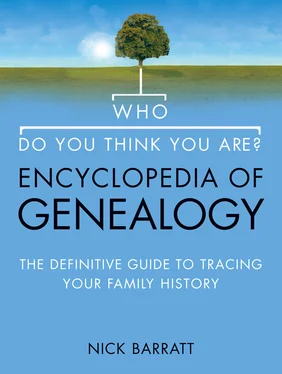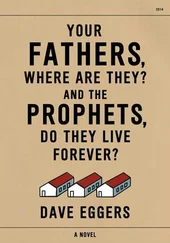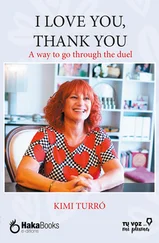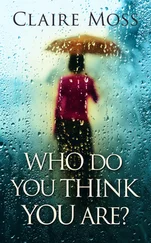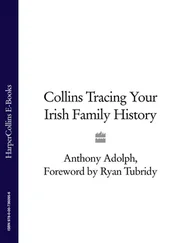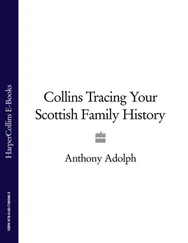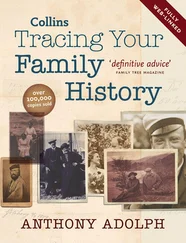The actual certificate will provide the following information:
• Above the columns there will be a section stating exactly where the marriage took place (which church or other place) and in which parish and county. This is very useful as it can indicate whether your ancestors were non-conformists or not.
• When married: The exact date the marriage took place.
• Name and surname: The full names of both parties getting married.
• Age: The given age of the bride and groom; it is important to note that these may not be entirely accurate. It was not uncommon for people to state that they were simply of a ‘full’ age or even a ‘minor’ age. Prior to 1969, full age would be someone aged over 21 years and a minor anyone younger than 21. Thus it could be problematic working out the exact ages when trying to find the birth records of these people. Also, it was not uncommon for people to lie about their age, depending on the circumstance. People under 21 may claim to be several years older to avoid the need for parental consent. Alternatively, older women marrying men significantly younger than them may give a younger age to minimize any potential scandal.
• Condition: This column states whether the marrying party was a bachelor, spinster or widow/widower. You may be surprised to find out that your relatively young ancestor was already widowed and marrying for a second time. However, mortality rates would have been significantly higher in the early period of civil registration and sometimes people lost their spouses quite soon after marriage, particularly in childbirth. Remarriage was therefore a viable practice, especially with young widowed men with small children who needed a maternal figure to look after them.
• Rank or profession: The occupation of the two parties is stated here. In the same way as with the occupation section in birth certificates, be aware of exaggerations and, depending on the given occupation, whether you will be able to locate their employment records. Female occupations were not regularly detailed until the twentieth century.
• Residence at the time of the marriage: The address of the bride and groom at the time of their wedding; the usual custom was to be married in the parish of the bride and sometimes the groom would have a temporary address in that same parish, as he would have had to have been living in the parish for a month to be married there.
• Father’s name and surname: A vital clue for the genealogical researcher, helping one get one generation further back at the same time, although the mother’s name would not be given. If the father was deceased it would often (but not always) be recorded as ‘deceased’ in brackets after the father’s name.
• Rank or profession of father: The occupation of the father of both bride and groom is provided. Again, be aware of the same inaccuracies in the given occupations.
• The type of marriage: Whether the marriage was performed by a marriage licence or banns, announced in the parish church for the three weeks preceding the wedding.
• Name and signature of two witnesses: At least two people are required to witness the marriage. These would often, but not always, be family members of the bride and groom.
Marriage certificates
To trace Bill Oddie’s family further back in time, it was necessary to verify the personal details of each generation and order the necessary certificates. This meant starting at the beginning by obtaining the marriage certificate (left) of his parents, Harry Oddie and Lilian Clegg, in 1938. The GRO indexes were examined, and an entry quickly found in the December quarter. The certificate was ordered, and contained the following information .
Marriage at the Methodist Church, William Street, Rochdale
Groom: Harry Oddie, 28, bachelor; occupation municipal clerk; address 17 Russell Street, Rochdale; father Wilkinson Oddie (deceased), loom overlooker
Bride: Lilian Clegg, 24, spinster; occupation shop assistant, general store: address 82 Grove Street, Rochdale; father Joseph Peter Clegg (deceased), engineer
Witnesses: Edgar Oddie, Marion Oddie
With this information other searches could be started. Harry and Lilian’s ages at marriage meant that their birth certificates were relatively easy to locate – Harry was born in 1910 and Lilian in 1914 – whilst searches could be started for their fathers’ death certificates as well, prior to 1938 .
These certificates record the time and cause of death. They are perhaps less obviously useful for people trying to take generations further back, but can give a useful picture of the social standing and life conditions of your ancestor (usually indicated by cause of death).
The recording and indexing of death certificates is done in the same way as births, with a record being kept locally by the superintendent registrar and one nationally at the GRO. A death would be recorded locally where it occurred, rather than on the actual residence of the deceased. Again, the GRO indexes are organized annually and then subdivided into quarters. Within these quarters the individuals are listed strictly alphabetically, surname first and then forename. From the March quarter of 1866 to the March quarter of 1969 an age of death for the deceased also appears. Hence there is no need to order the actual certificate if you only require this information (and if you are sure this is the correct ancestor, as with common names you may only be able to verify if it is the right person by obtaining the actual certificate). From June 1969 an age at death was replaced by the date of birth of the individual. As with birth and marriage certificates, the indexes were organized annually from 1984, and not further subdivided on a quarterly basis.
The actual certificate will give the following information:
• The exact registration district where the death was recorded.
• When and where died: The exact location of where the death occurred, which may not be where the deceased lived as he or she may have been visiting family or died in hospital.
• Name and surname: The full name of the deceased.
• Sex: Whether the deceased was male or female.
• Age: The age of the deceased; this is perhaps the most useful piece of information for those wishing to take their family tree further back in generations. Once you have an age it is possible to start searching for the individual’s birth certificate and parentage. Bear in mind, however, that this information would not always be accurate as no proof of age was required. Not everyone remembered their age with absolute certainty, especially those born prior to civil registration or in the early part of the nineteenth century.
• Occupation: A good genealogical clue in helping trace appropriate employment records if relevant. Women who were married or widowed would usually have the name and maybe occupation of their husband provided, which can be useful.
• Cause of death: The more modern records of death may give quite specialized medical terms that may need to be researched. The early certificates could be somewhat vaguer in the medical terms used. The cause and age of death are good indicators of the living conditions of the deceased, with poorer people generally having shorter life spans then the wealthier classes. Additionally, a sudden death or accident would often require a coroner’s inquest before the death certificate could be issued, and the date of the inquest should be stated on the certificate. These inquests may well have been reported in local newspapers and it is worth pursuing this line of enquiry. You may also be able to find the actual coroner’s report in your local record office. However, they are subject to data protection for 75 years and not every report would have survived, as there is no legal requirement to retain the information after 15 years have elapsed.
Читать дальше
